Md Shafayat Hossain
Topological, or Non-topological? A Deep Learning Based Prediction
Oct 29, 2023
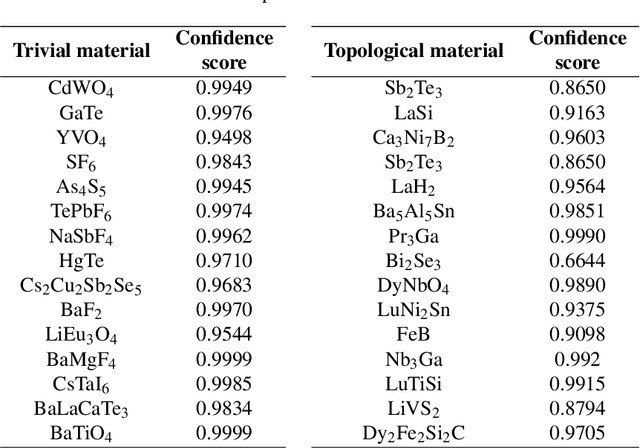
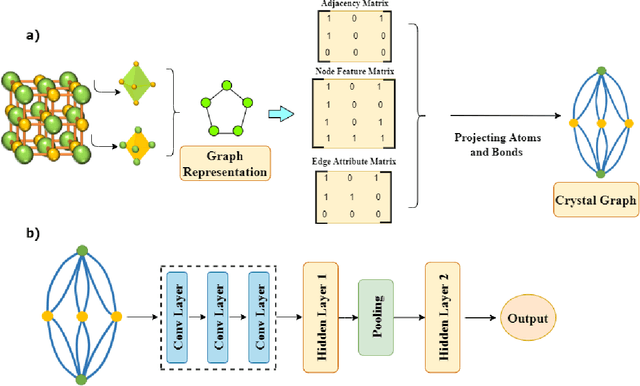
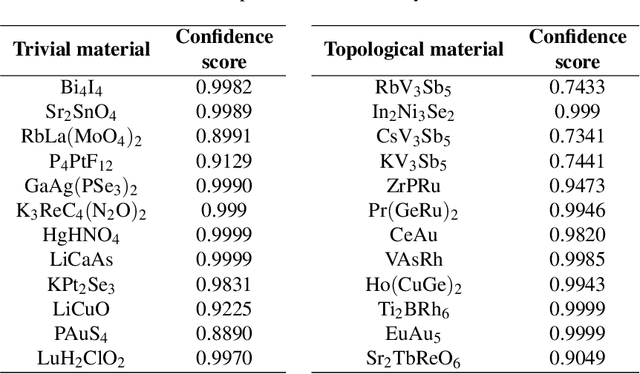
Abstract:Prediction and discovery of new materials with desired properties are at the forefront of quantum science and technology research. A major bottleneck in this field is the computational resources and time complexity related to finding new materials from ab initio calculations. In this work, an effective and robust deep learning-based model is proposed by incorporating persistent homology and graph neural network which offers an accuracy of 91.4% and an F1 score of 88.5% in classifying topological vs. non-topological materials, outperforming the other state-of-the-art classifier models. The incorporation of the graph neural network encodes the underlying relation between the atoms into the model based on their own crystalline structures and thus proved to be an effective method to represent and process non-euclidean data like molecules with a relatively shallow network. The persistent homology pipeline in the suggested neural network is capable of integrating the atom-specific topological information into the deep learning model, increasing robustness, and gain in performance. It is believed that the presented work will be an efficacious tool for predicting the topological class and therefore enable the high-throughput search for novel materials in this field.
A Deep Dive into the Design Space of a Dynamically Reconfigurable Cryogenic Spiking Neuron
Aug 30, 2023



Abstract:Spiking neural network offers the most bio-realistic approach to mimic the parallelism and compactness of the human brain. A spiking neuron is the central component of an SNN which generates information-encoded spikes. We present a comprehensive design space analysis of the superconducting memristor (SM)-based electrically reconfigurable cryogenic neuron. A superconducting nanowire (SNW) connected in parallel with an SM function as a dual-frequency oscillator and two of these oscillators can be coupled to design a dynamically tunable spiking neuron. The same neuron topology was previously proposed where a fixed resistance was used in parallel with the SNW. Replacing the fixed resistance with the SM provides an additional tuning knob with four distinct combinations of SM resistances, which improves the reconfigurability by up to ~70%. Utilizing an external bias current (Ibias), the spike frequency can be modulated up to ~3.5 times. Two distinct spike amplitudes (~1V and ~1.8 V) are also achieved. Here, we perform a systematic sensitivity analysis and show that the reconfigurability can be further tuned by choosing a higher input current strength. By performing a 500-point Monte Carlo variation analysis, we find that the spike amplitude is more variation robust than spike frequency and the variation robustness can be further improved by choosing a higher Ibias. Our study provides valuable insights for further exploration of materials and circuit level modification of the neuron that will be useful for system-level incorporation of the neuron circuit
Cryogenic Neuromorphic Hardware
Mar 25, 2022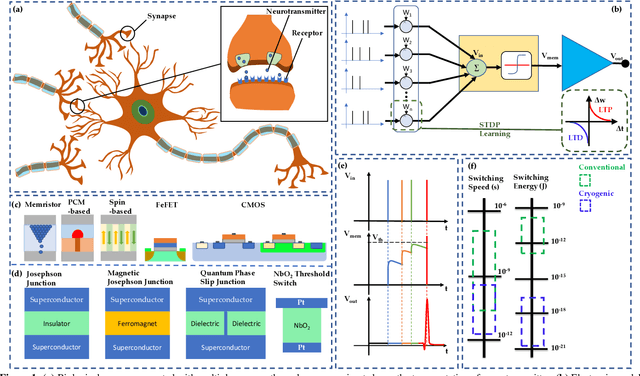
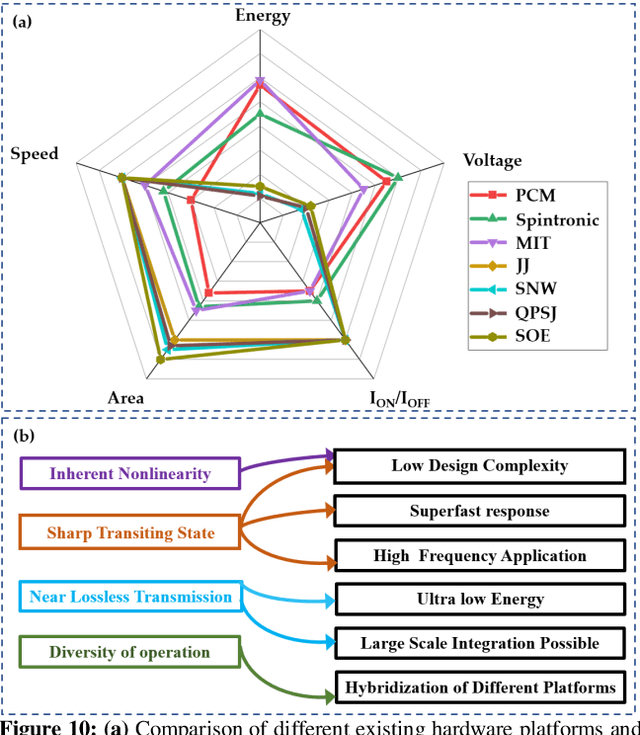
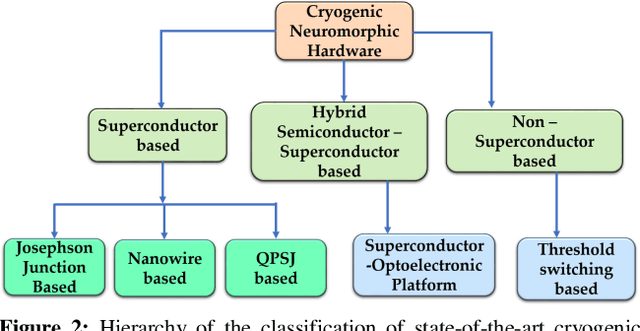
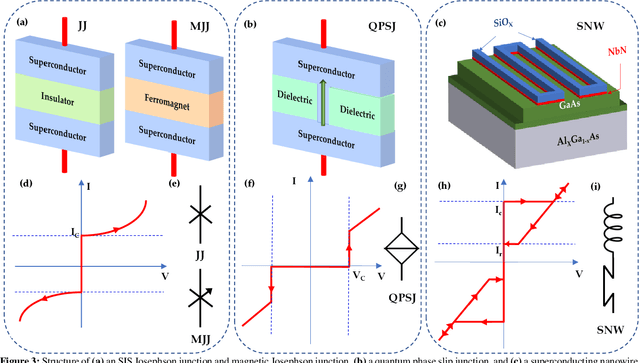
Abstract:The revolution in artificial intelligence (AI) brings up an enormous storage and data processing requirement. Large power consumption and hardware overhead have become the main challenges for building next-generation AI hardware. Therefore, it is imperative to look for a new architecture capable of circumventing these bottlenecks of conventional von Neumann architecture. Since the human brain is the most compact and energy-efficient intelligent device known, it was intuitive to attempt to build an architecture that could mimic our brain, and so the chase for neuromorphic computing began. While relentless research has been underway for years to minimize the power consumption in neuromorphic hardware, we are still a long way off from reaching the energy efficiency of the human brain. Besides, design complexity, process variation, etc. hinder the large-scale implementation of current neuromorphic platforms. Recently, the concept of implementing neuromorphic computing systems in cryogenic temperature has garnered immense attention. Several cryogenic devices can be engineered to work as neuromorphic primitives with ultra-low demand for power. Cryogenic electronics has therefore become a promising exploratory platform for an energy-efficient and bio-realistic neuromorphic system. Here we provide a comprehensive overview of the reported cryogenic neuromorphic hardware. We carefully classify the existing cryogenic neuromorphic hardware into different categories and draw a comparative analysis based on several performance metrics. Finally, we explore the future research prospects to circumvent the challenges associated with the current technologies.
 Add to Chrome
Add to Chrome Add to Firefox
Add to Firefox Add to Edge
Add to Edge